5. Anomaly Detection
Also known as “Outlier Detection”. Automatically identify data points that are somehow different from the rest
Working assumption: There are considerably more “normal” observations than “abnormal” observations (outliers/anomalies) in the data
Challenges
How many outliers are there in the data?
What do they look like?
Method is unsupervised: Validation can be quite challenging (just like for clustering)
Recap: Errors in Data
Sources: malfunctioning sensors | errors in manual data processing (e.g., twisted digits) | storage/transmission errors | encoding problems, misinterpreted file formats | bugs in processing code | …
Simple remedy: remove data points outside a given interval (this requires some domain knowledge)
Advanced remedies: automatically find suspicious data points
Applications: Data Preprocessing
Data preprocessing: removing erroneous data & removing true, but useless deviations
Example: tracking people down using their GPS data
GPS values might be wrong
person may be on holidays in Hawaii
Applications: Credit Card Fraud Detection
Goal: identify unusual transactions -> possible attributes: location, amount, currency, …
Applications: Hardware Failure Detection
Applications: Stock Monitoring
Cautions: Errors vs. Natural Outliers
Errors, Outliers, Anomalies, Novelties…
What are we looking for?
Wrong data values (errors)
Unusual observations (outliers or anomalies)
Observations not in line with previous observations (novelties)
Unsupervised Setting:
Data contains both normal and outlier points
Task: compute outlier score for each data point
Supervised setting:
Training data is considered normal
Train a model to identify outliers in test dataset
Methods for Anomaly Detection
Graphical: Look at data, identify suspicious observations
Statistic: Identify statistical characteristics of the data, e.g., mean, standard deviation. Find data points which do not follow those characteristics
Density-based: Consider distributions of data & Dense regions are considered the “normal” behavior
Model-based: Fit an explicit model to the data & Identify points which do not behave according to that model
Anomaly Detection Schemes
General Steps
- Build a profile of the “normal” behavior
Profile can be patterns or summary statistics for the overall population - Use the “normal” profile to detect anomalies
Anomalies are observations whose characteristics differ significantly from the normal profile
Types of anomaly detection schemes
(1) Graphical & Statistical-based
(2) Distance-based
(3) Model-based
5.1 Graphical Approaches
Boxplot (1-D), Scatter plot (2-D), Spin plot (3-D)
Limitations: Time consuming & Subjective
Convex Hull Method
Extreme points are assumed to be outliers
Use convex hull method to detect extreme values
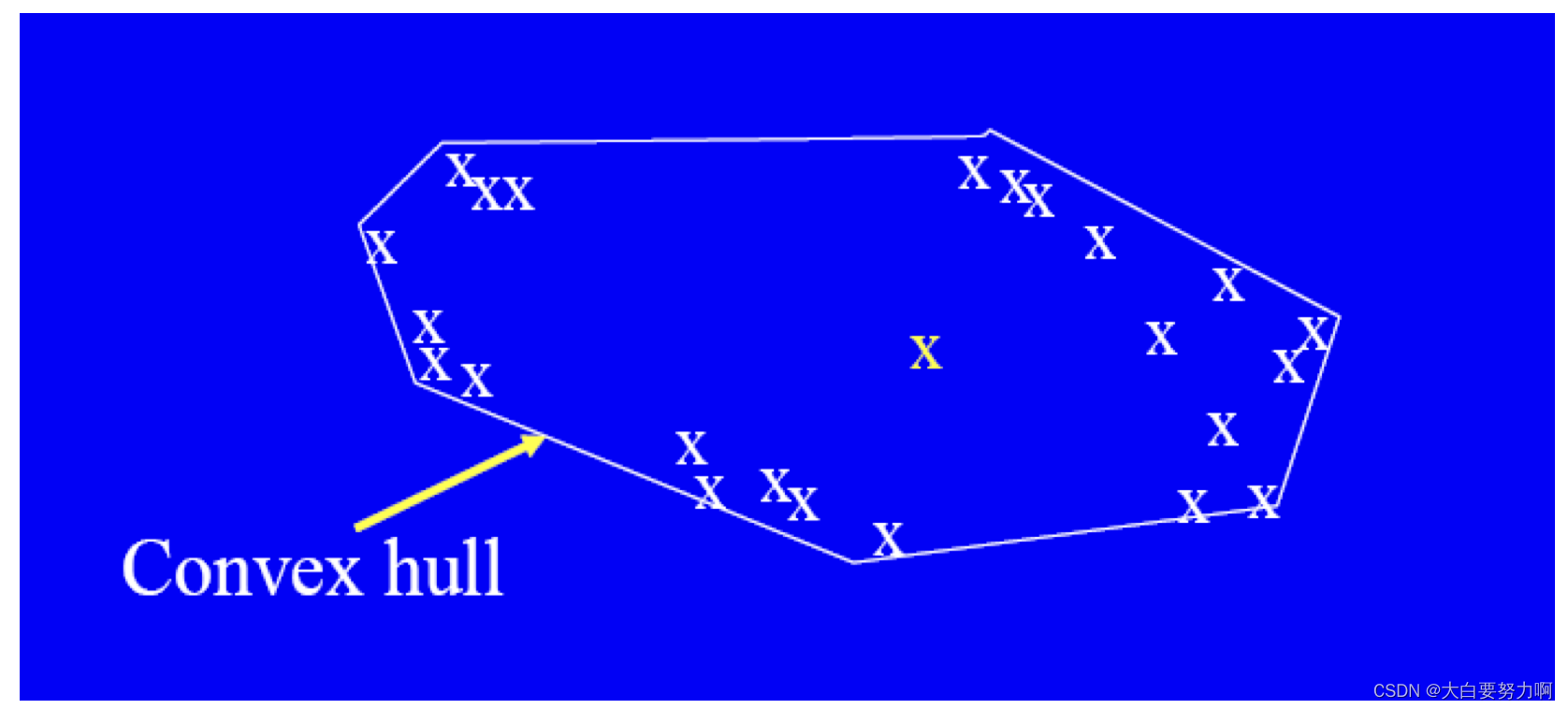
What if the outlier occurs in the middle of the data?

5.2 Statistical Approaches
Assume a parametric model describing the distribution of the data (e.g., normal distribution)
Apply a statistical test that depends on
- Data distribution
- Parameter of distribution (e.g., mean, variance)
- Number of expected outliers (confidence limit)
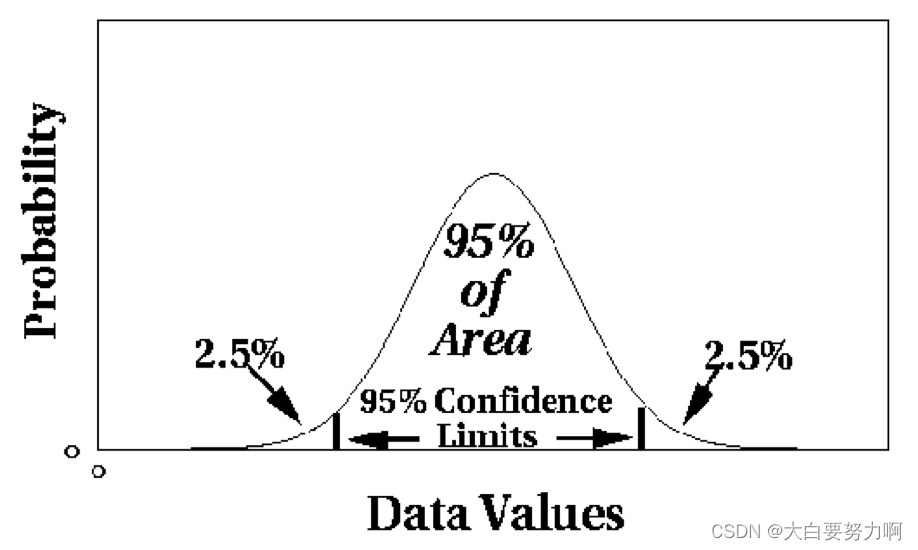
5.2.1 Interquartile Range
Divides data in quartiles
Definitions:
Q1: x≥Q1 holds for 75% of all x
Q3: x≥Q3 holds for 25% of all x
IQR = Q3-Q1
Outlier detection: All values outside [median-1.5IQR ; median+1.5IQR]
Example:
0,1,1,3,3,5,7,42 → median=3, Q1=1, Q3=7 → IQR = 6
Allowed interval: [3-1.56 ; 3+1.56] = [-6 ; 12]
Thus, 42 is an outlier
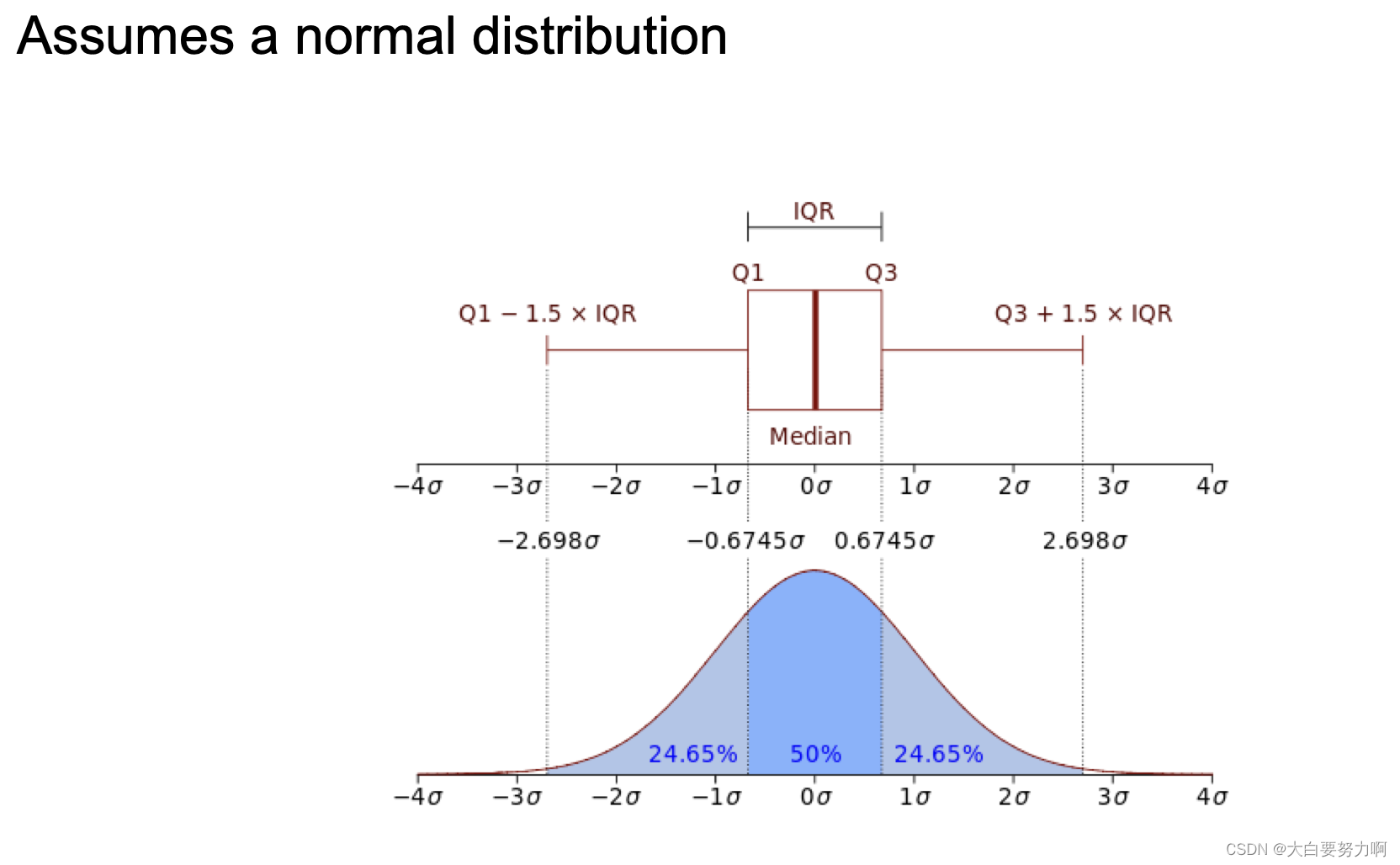
5.2.2 Median Absolute Deviation (MAD)

5.2.3 Fitting Elliptic Curves
Multi-dimensional datasets can be seen as following a normal distribution on each dimension. The intervals in one-dimensional cases become elliptic curves.
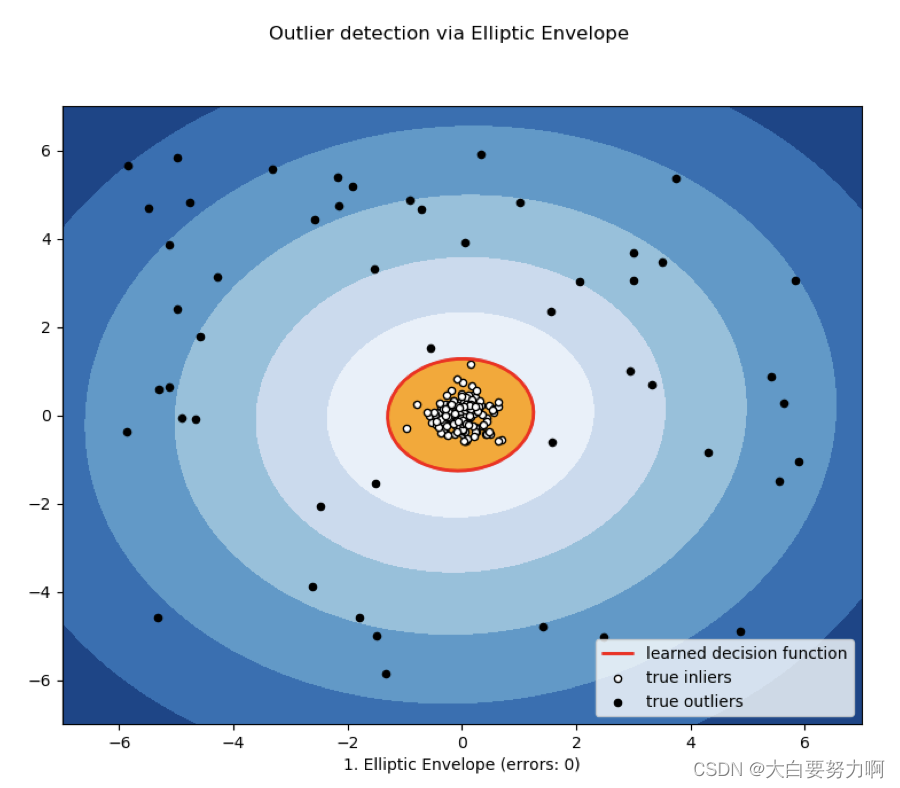
Limitations
Most of the tests are for a single attribute (called: univariate)
For high dimensional data, it may be difficult to estimate the true distribution
In many cases, the data distribution may not be known – e.g., IQR Test: assumes Gaussian distribution


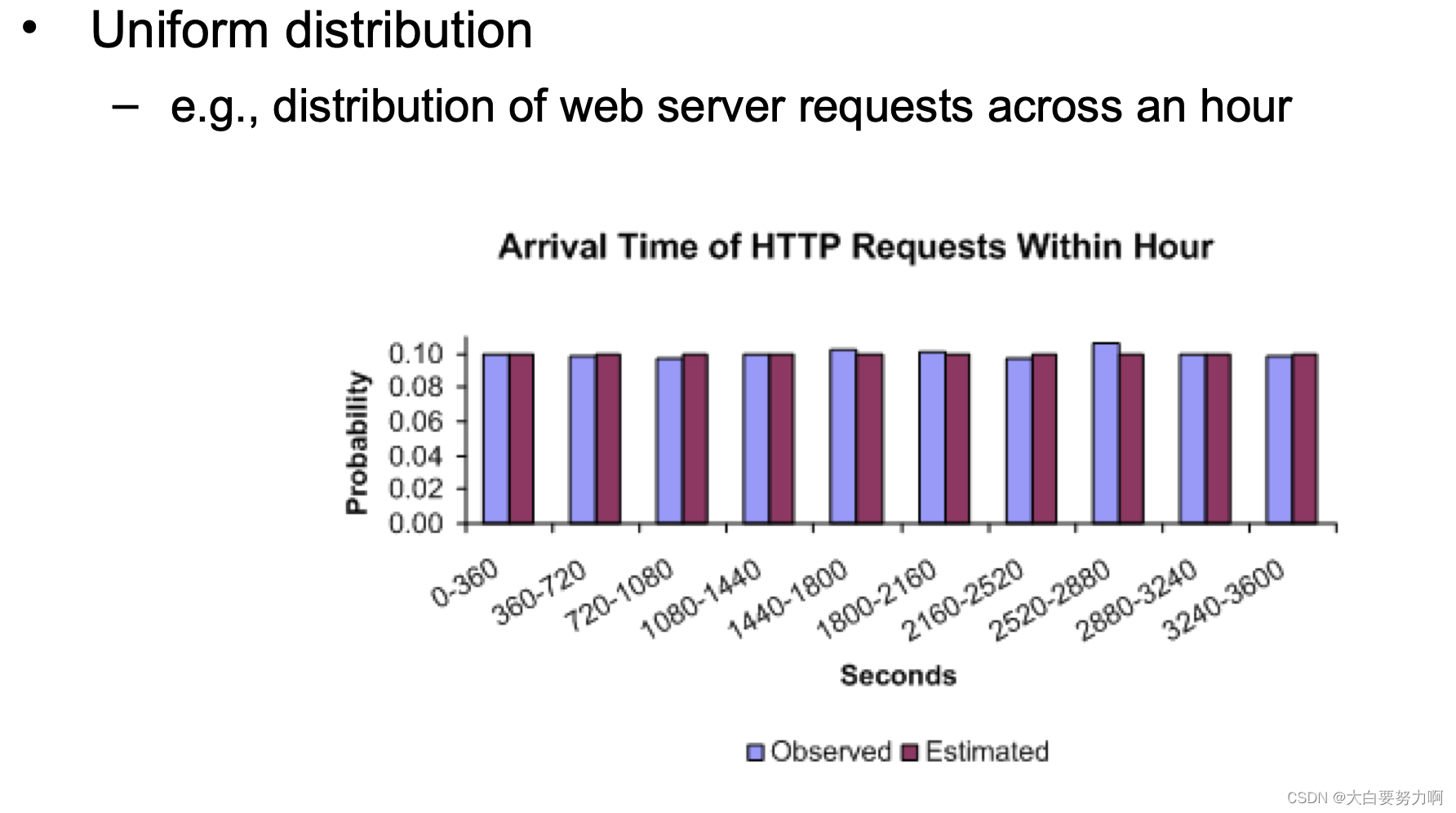

Outliers vs. Extreme Values
So far, we have looked at extreme values only. But outliers can occur as non-extremes. In that case, methods like IQR fail.

5.3 Distance-based Approaches
Data is represented as a vector of features
Various approaches: Nearest-neighbor based, Density based, Clustering based, and Model based
5.3.1 Nearest-Neighbor Based Approach
Compute the distance between every pair of data points
There are various ways to define outliers:
- Data points for which there are fewer than p neighboring points within a distance D
- The top n data points whose distance to the kth nearest neighbor is greatest
- The top n data points whose average distance to the k nearest neighbors is greatest
5.3.2 Density based Approach
For each point, compute the density of its local neighborhood
if that density is higher than the average density, the point is in a cluster
if that density is lower than the average density, the point is an outlier
5.3.2.1 LOF
Compute local outlier factor (LOF) of a point A: ratio of average density of A’s neighbors to density of point A
Outliers are points with large LOF value (typical: larger than 1)
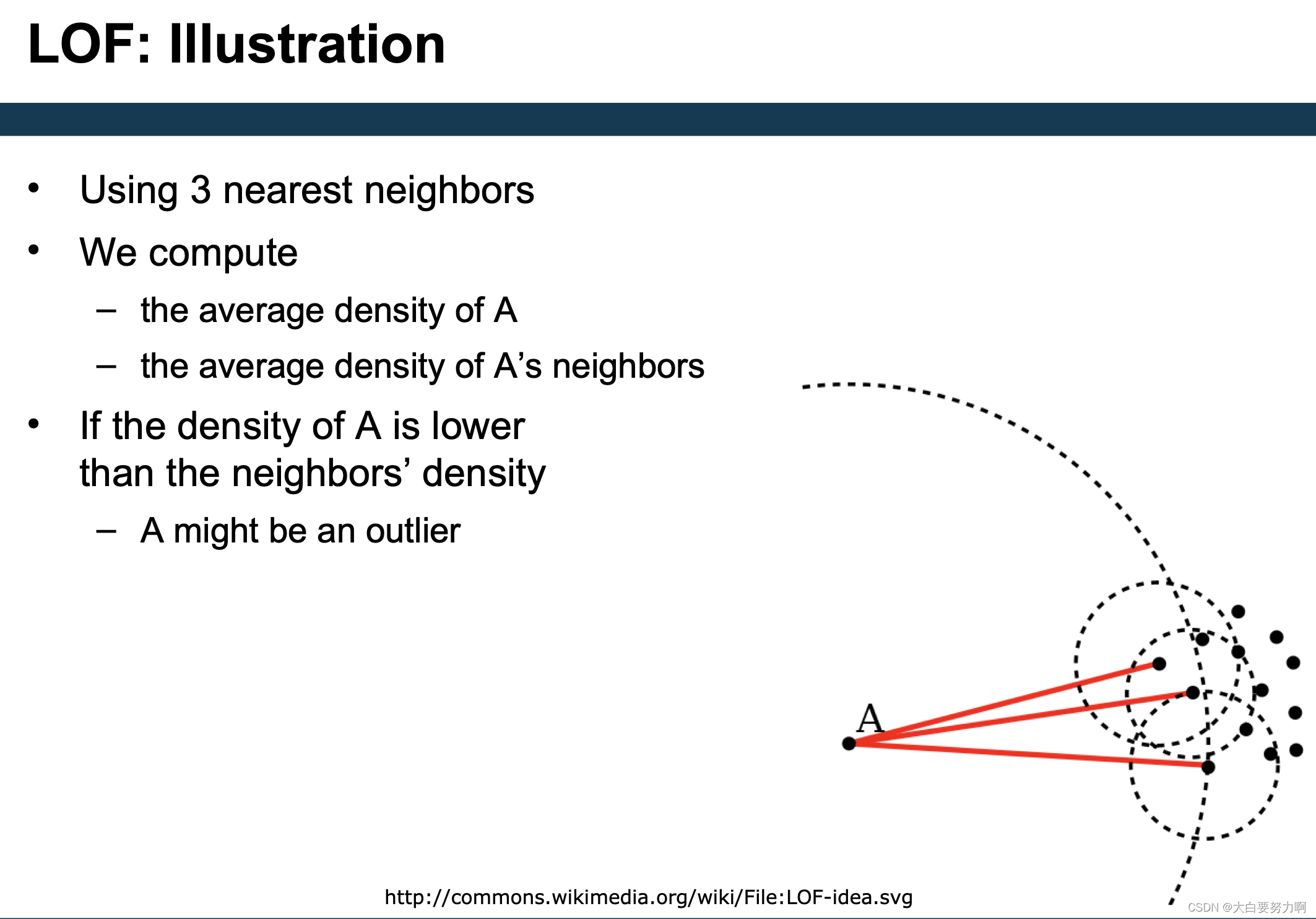

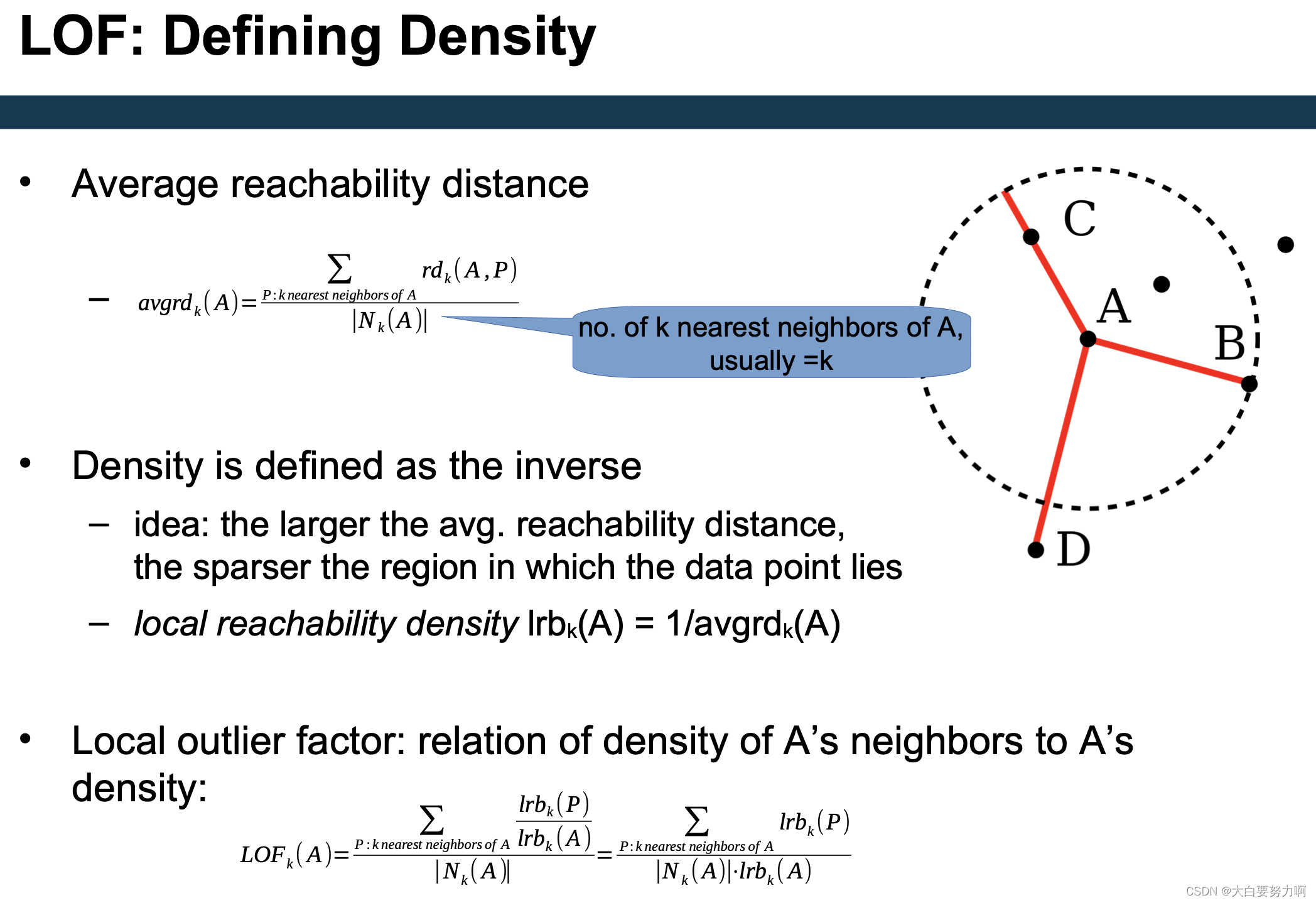
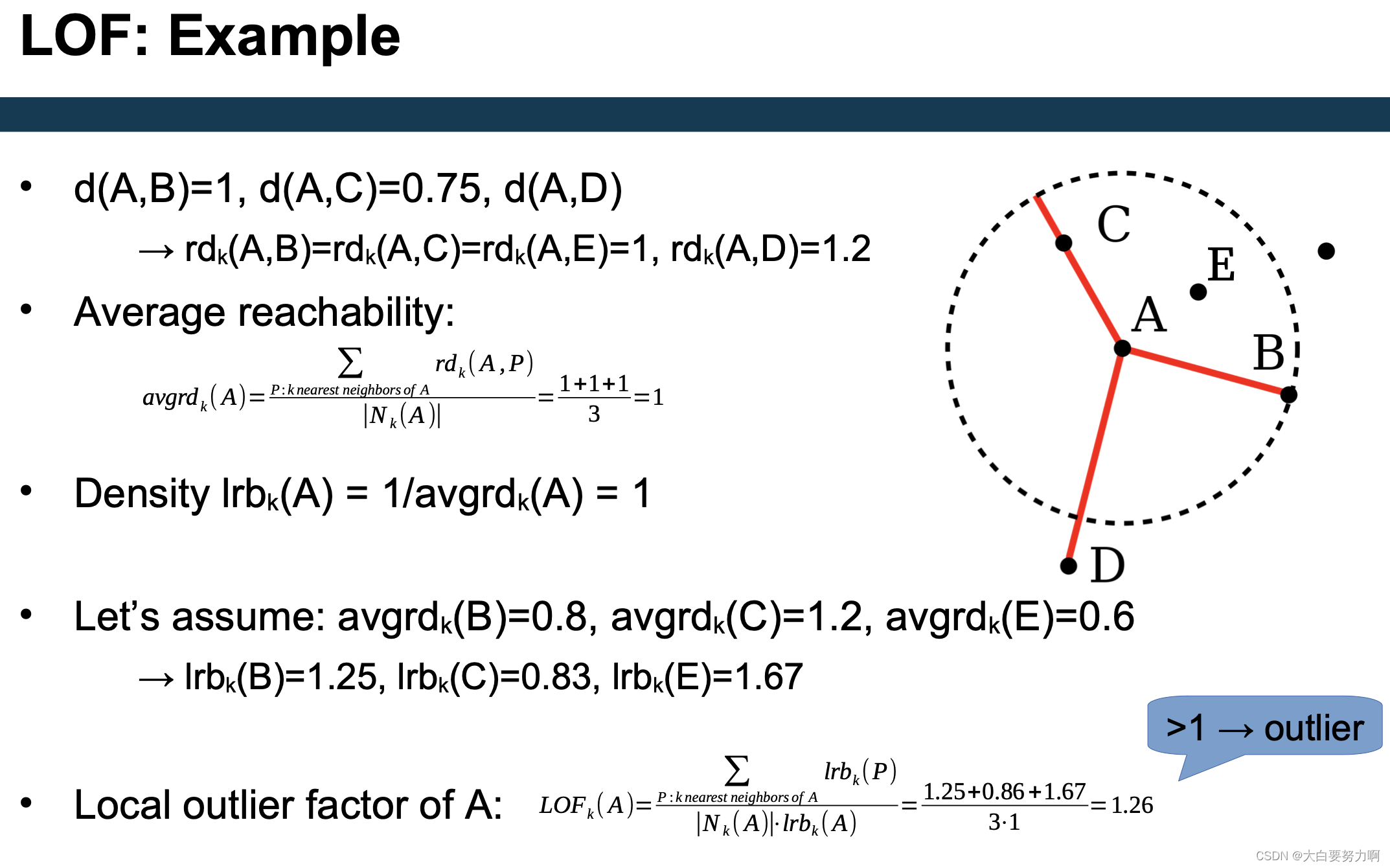
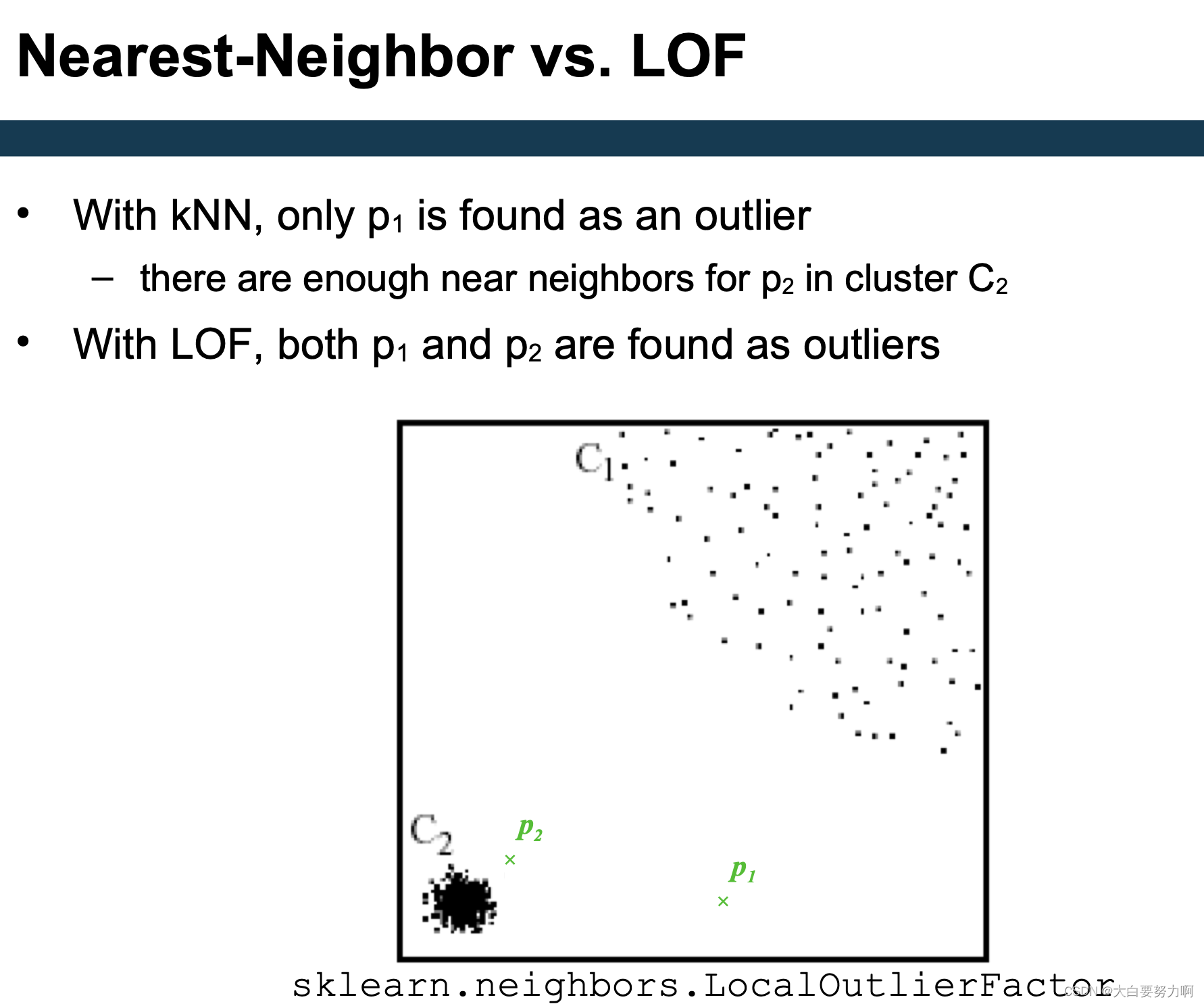
5.3.2.2 DBSCAN
DBSCAN is a density-based algorithm
Density = number of points within a specified radius (Eps)
Divides data points in three classes:
(1) A point is a core point if it has more than a specified number of points (MinPts) within Eps. These are points that are at the interior of a cluster
(2) A border point has fewer than MinPts within Eps, but is in the neighborhood of a core point
(3) A noise point is any point that is not a core point or a border point
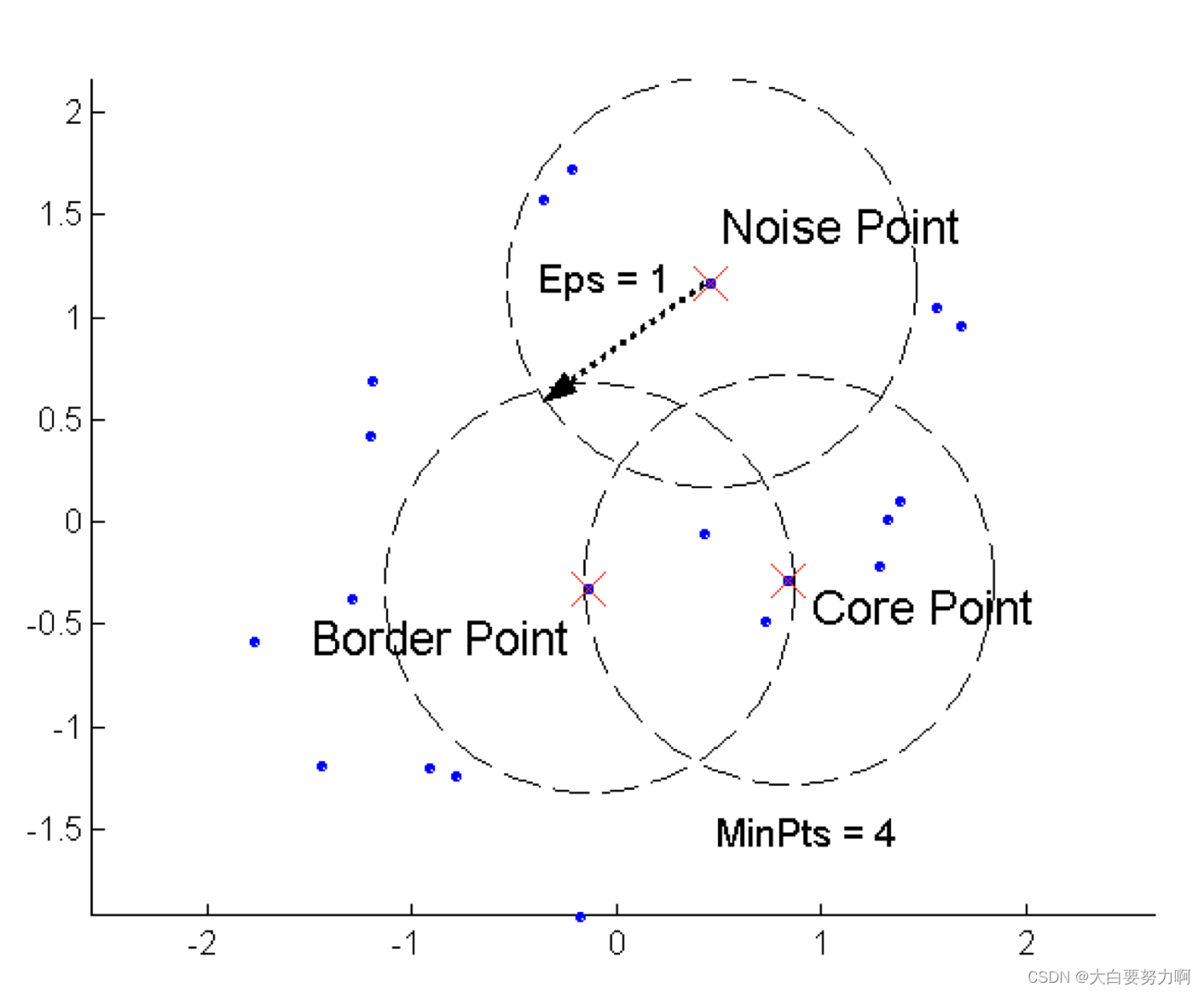
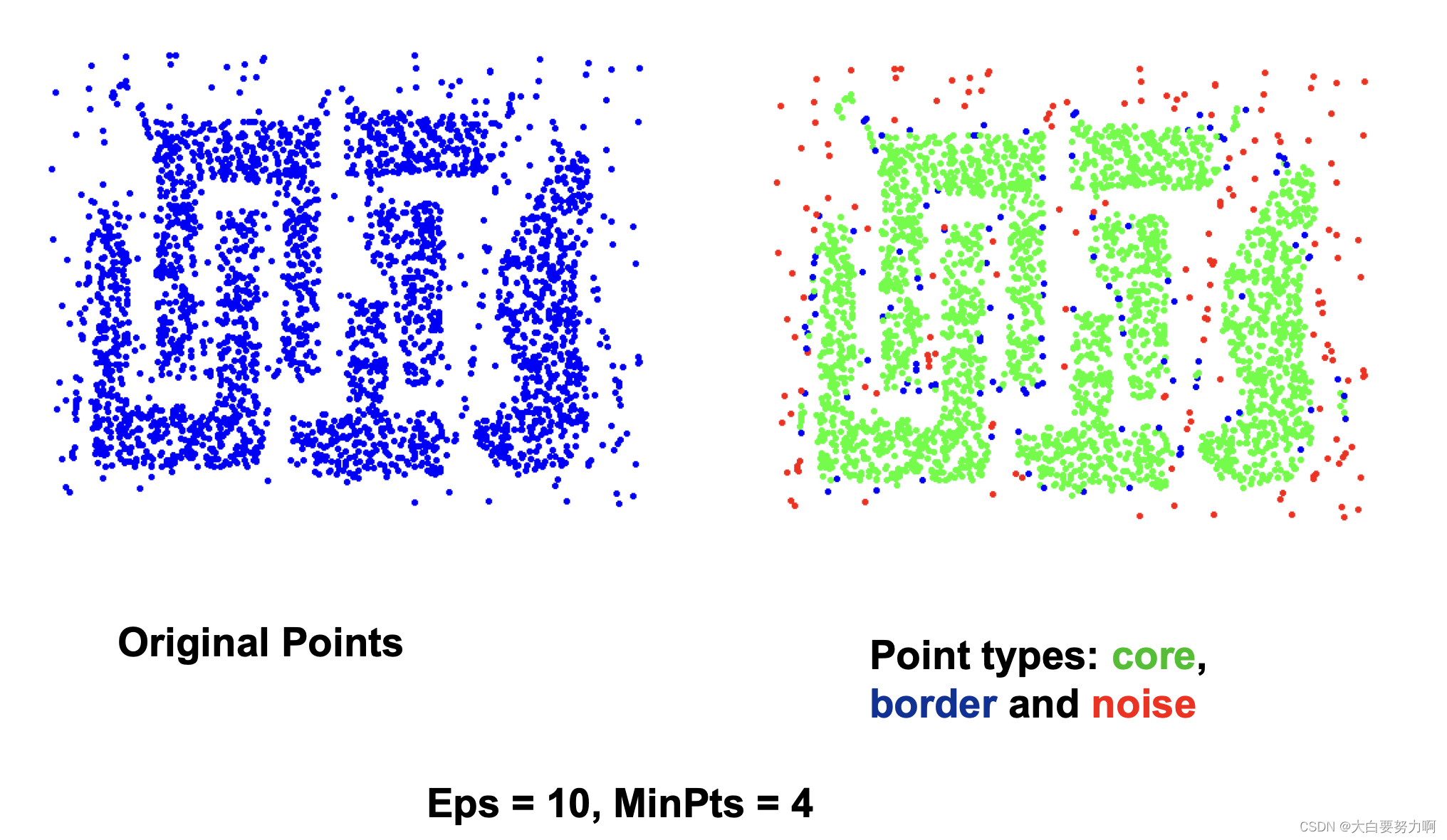
DBSCAN for Outlier Detection
DBSCAN directly identifies noise points. These are outliers not belonging to any cluster.
5.4 Clustering based Approach
Basic idea:
Cluster the data into groups of different density -> Choose points in small cluster as candidate outliers -> Compute the distance between candidate points and non-candidate clusters -> If candidate points are far from all other non-candidate points, they are outliers
5.4.1 Clustering-based Local Outlier Factor
Idea: anomalies are data points that are in a very small cluster or far away from other clusters
CBLOF is run on clustered data: assigns a score based on the size of the cluster a data point is in the distance of the data point to the next large cluster
General process: run a clustering algorithm (of your choice) -> apply CBLOF
5.4.2 PCA and Reconstruction Error
Recap: PCA tries to capture most dominant variations in the data – those can be seen as the “normal” behavior
Reconstruct original data point by inversing PCA
close to original: normally behaving data point
far from original: unnormally behaving data point
5.5 Model based Approach
Idea: there is a model underlying the data – Data points deviating from the model are outliers.
5.5.1 ALSO (Attribute-wise Learning for Scoring Outliers)
Learn a model for each attribute given all other attributes
Use model to predict expected value
Deviation between actual and predicted value → outlier
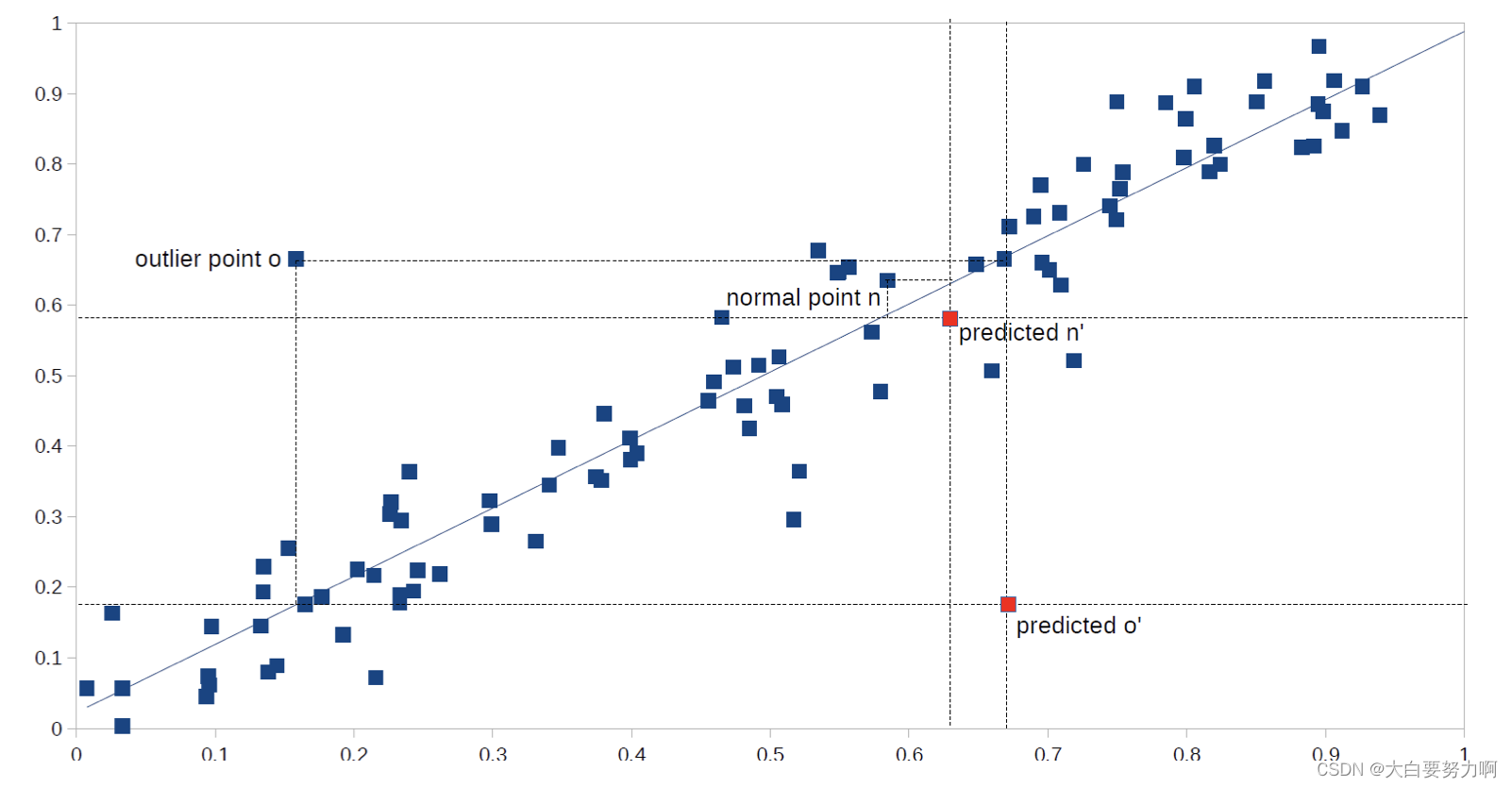
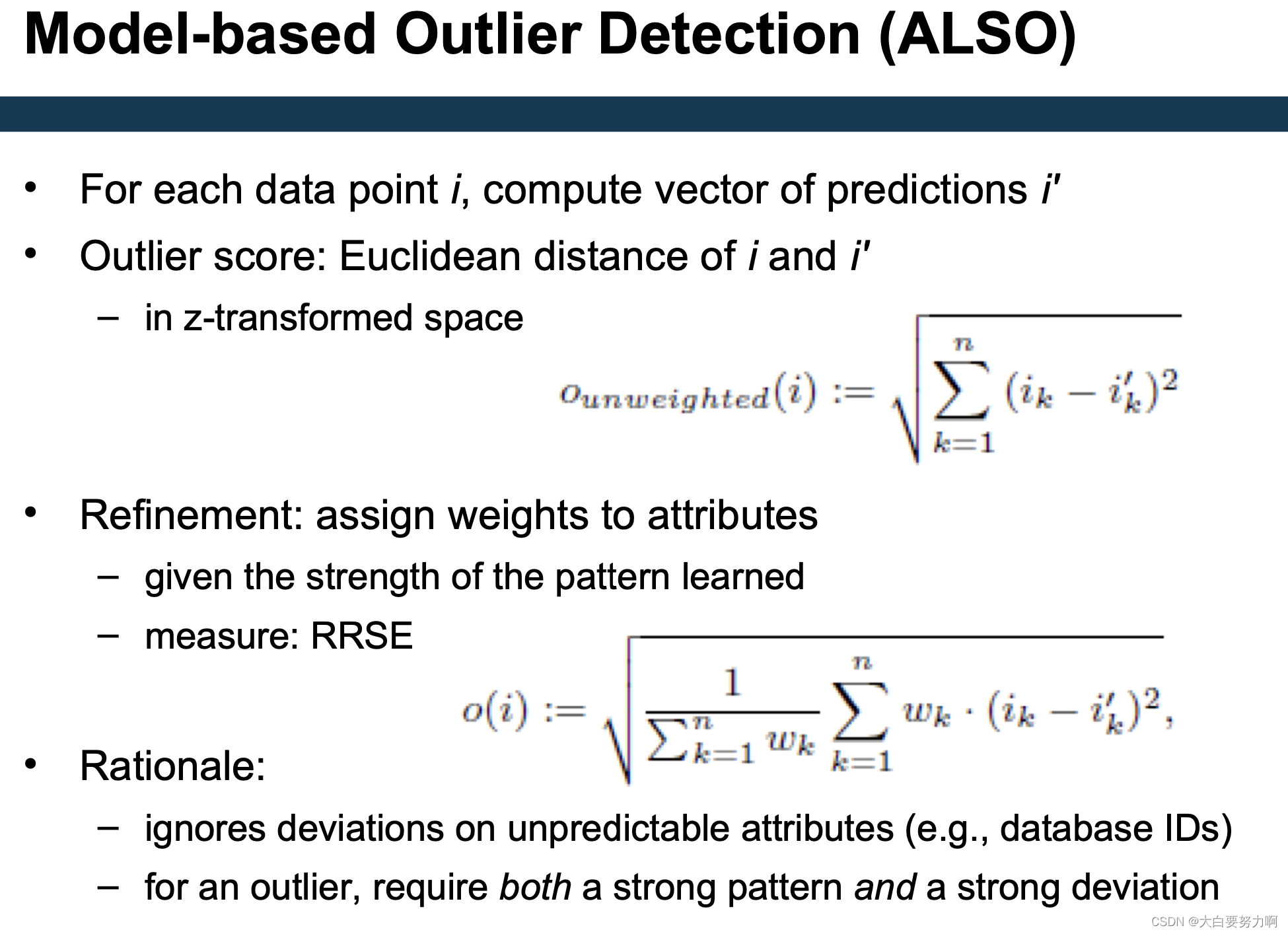
5.5.2 One-Class Support Vector Machines
Recap: Support Vector Machines
Find a maximum margin hyperplane to separate two classes
Use a transformation of the vector space
Thus, non-linear boundaries can be found
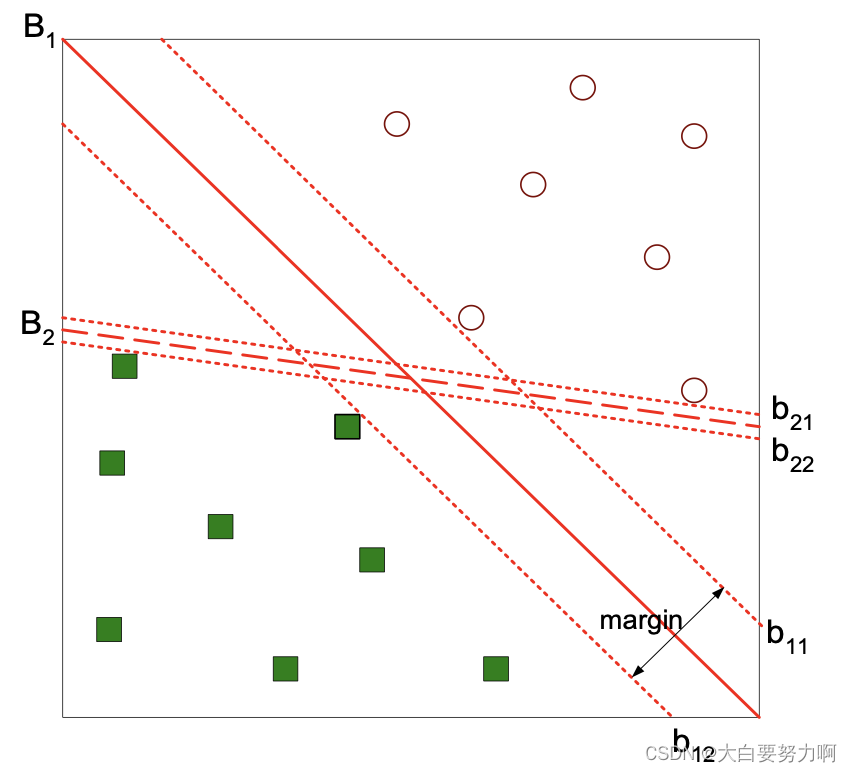
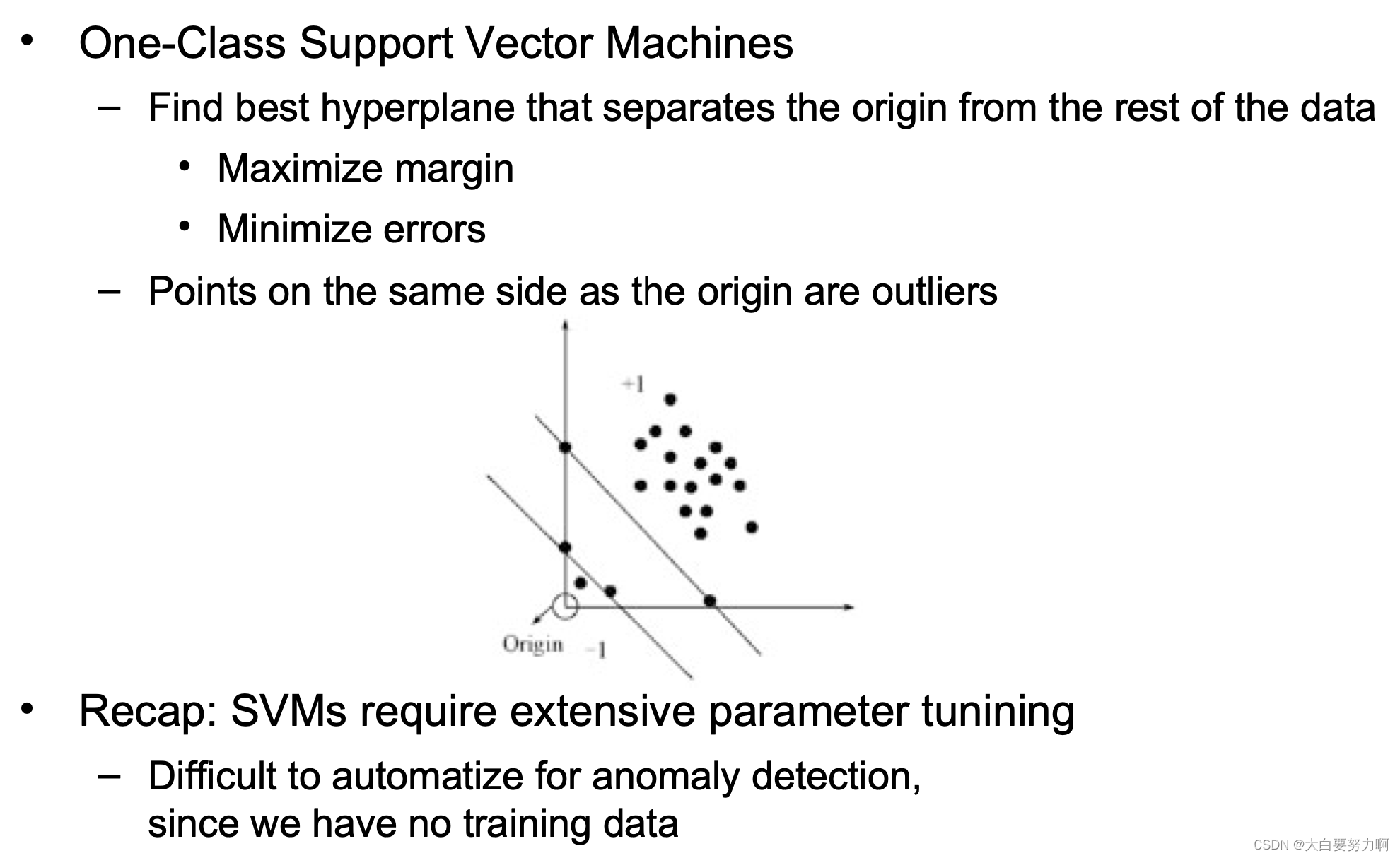
5.5.3 Isolation Forests
Isolation tree: a decision tree that has only leaves with one example each
Isolation forests: train a set of random isolation trees
Idea: path to outliers in a tree is shorter than path to normal points; across a set of random trees, average path length is an outlier score
Training a single isolation tree
for each leaf node w/ more than one data point
-> pick an attribute Att and a value V at random
-> create inner node with test Att < V (train isolation tree for each subtree)
Output
A tree with just one instance per node
Usually, an upper limit on height is used
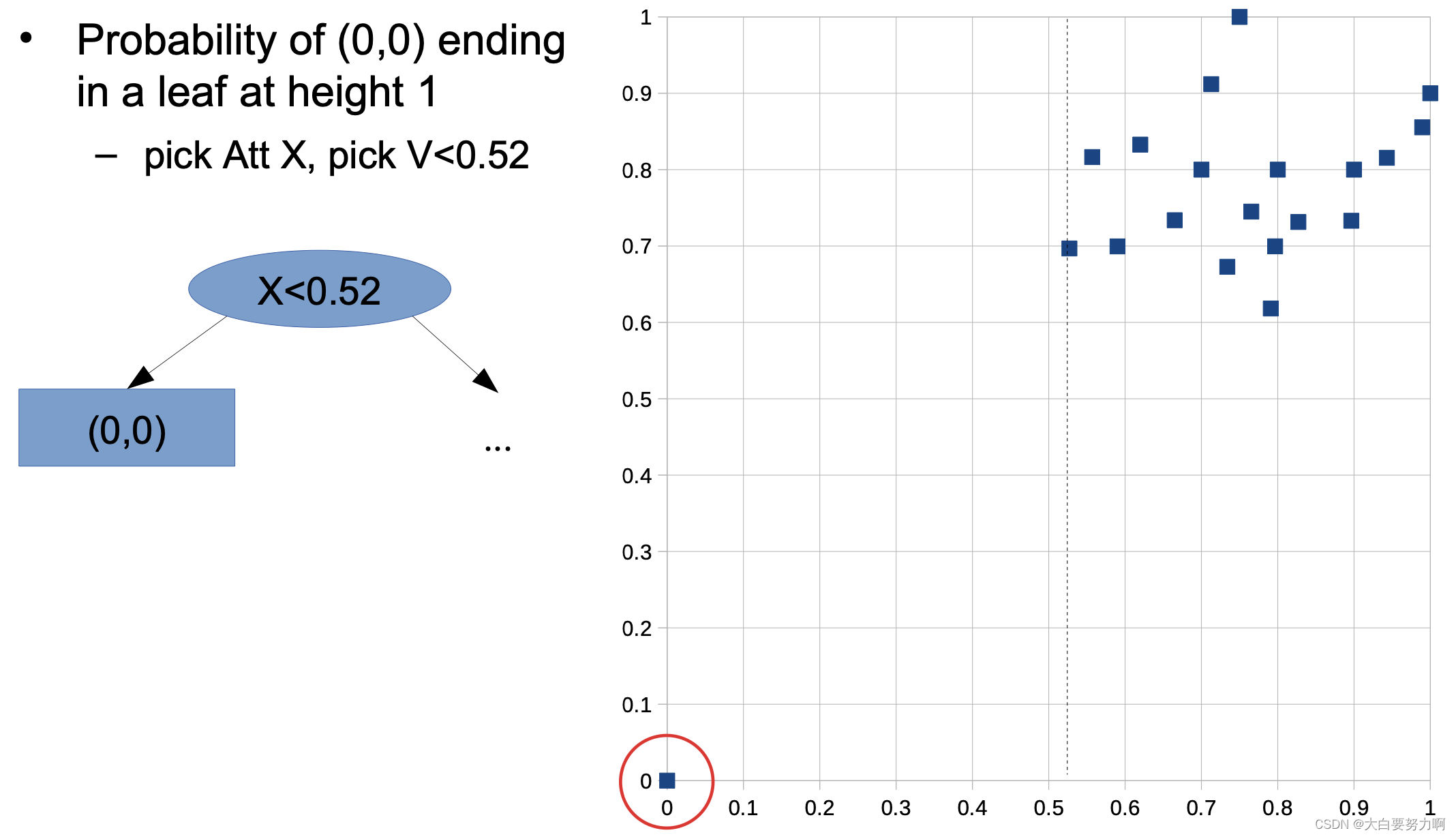
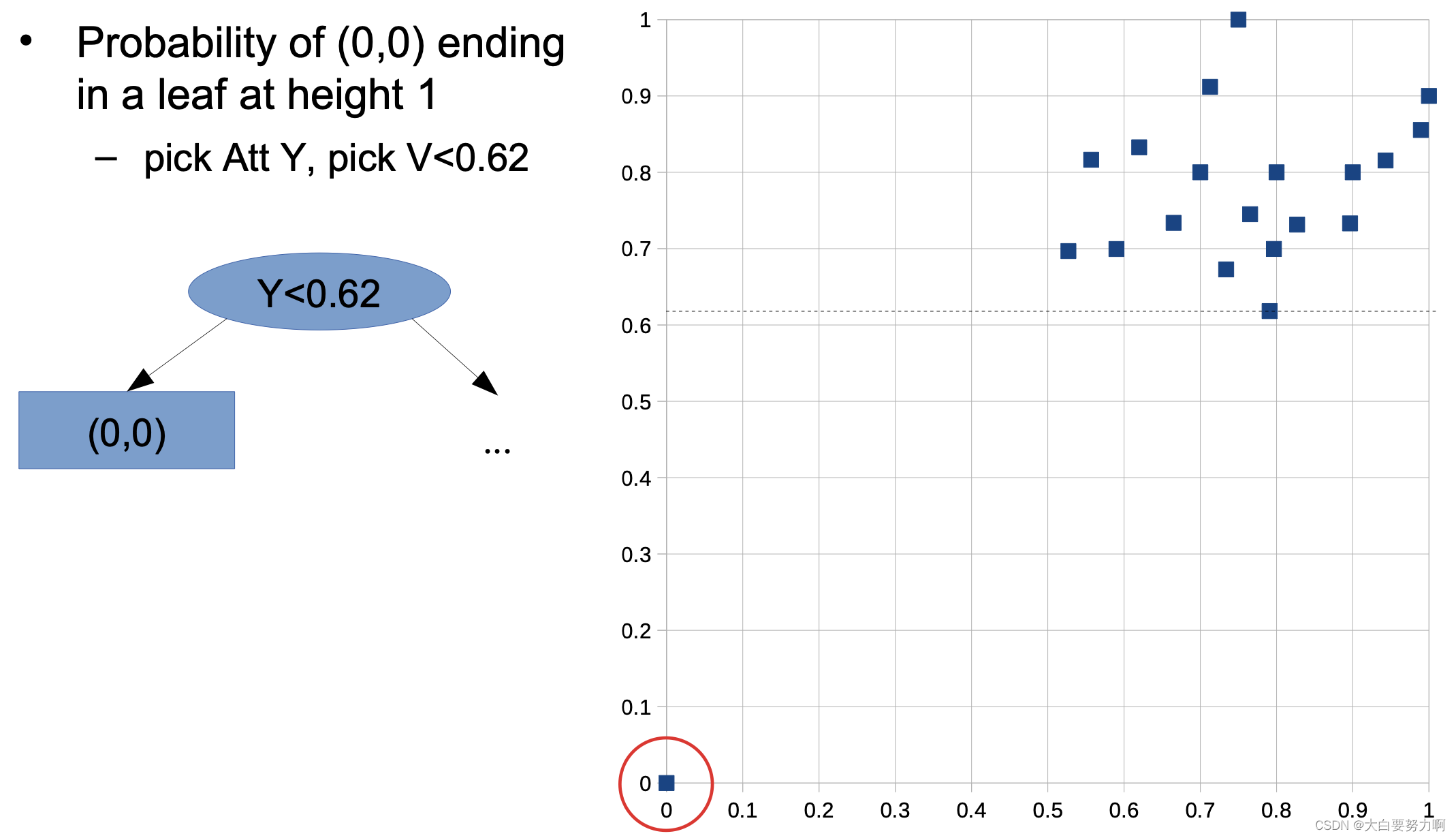
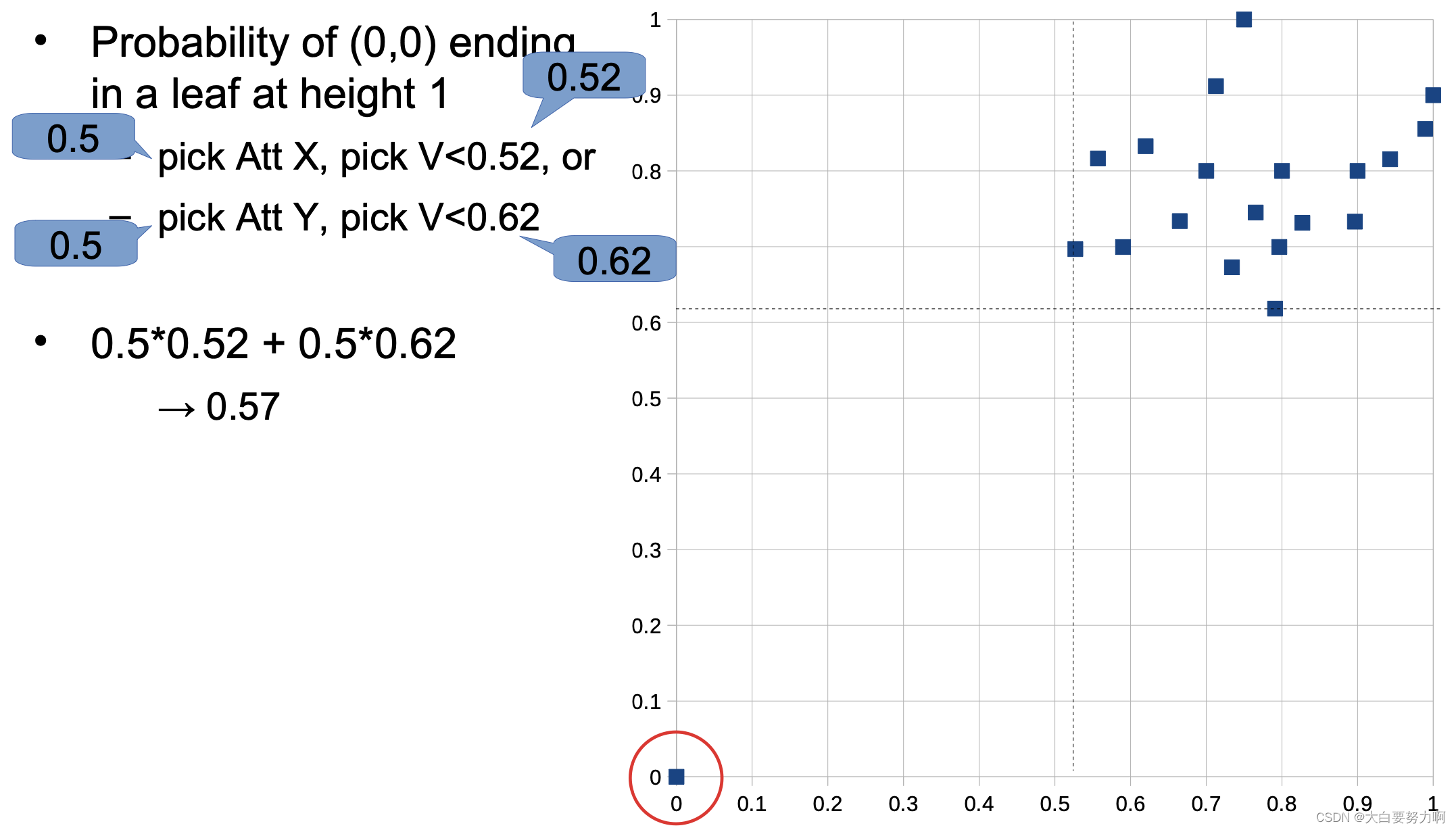
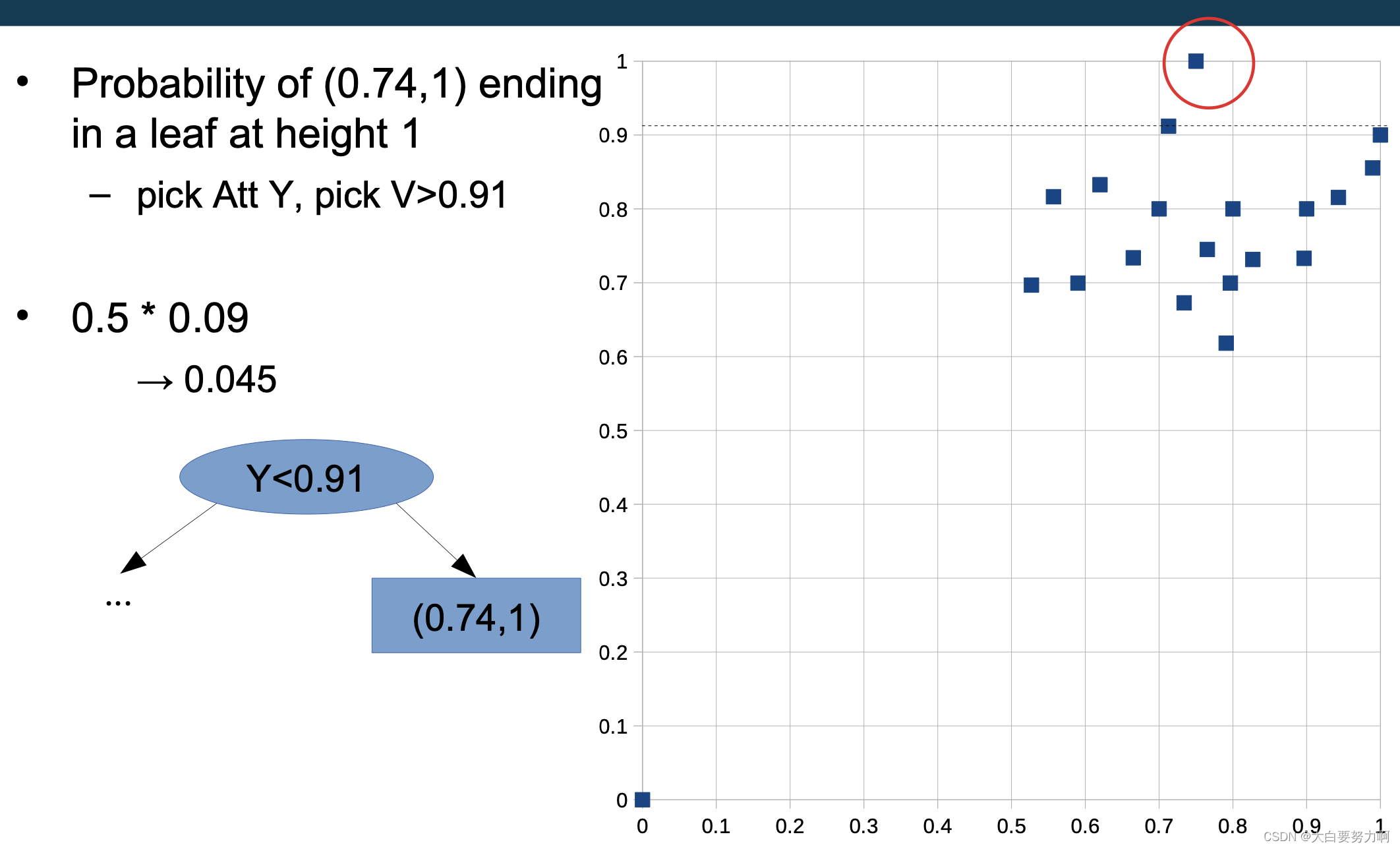

Probability of any other data point ending in a leaf at height 1 -this is not possible! at least two tests are necessary.
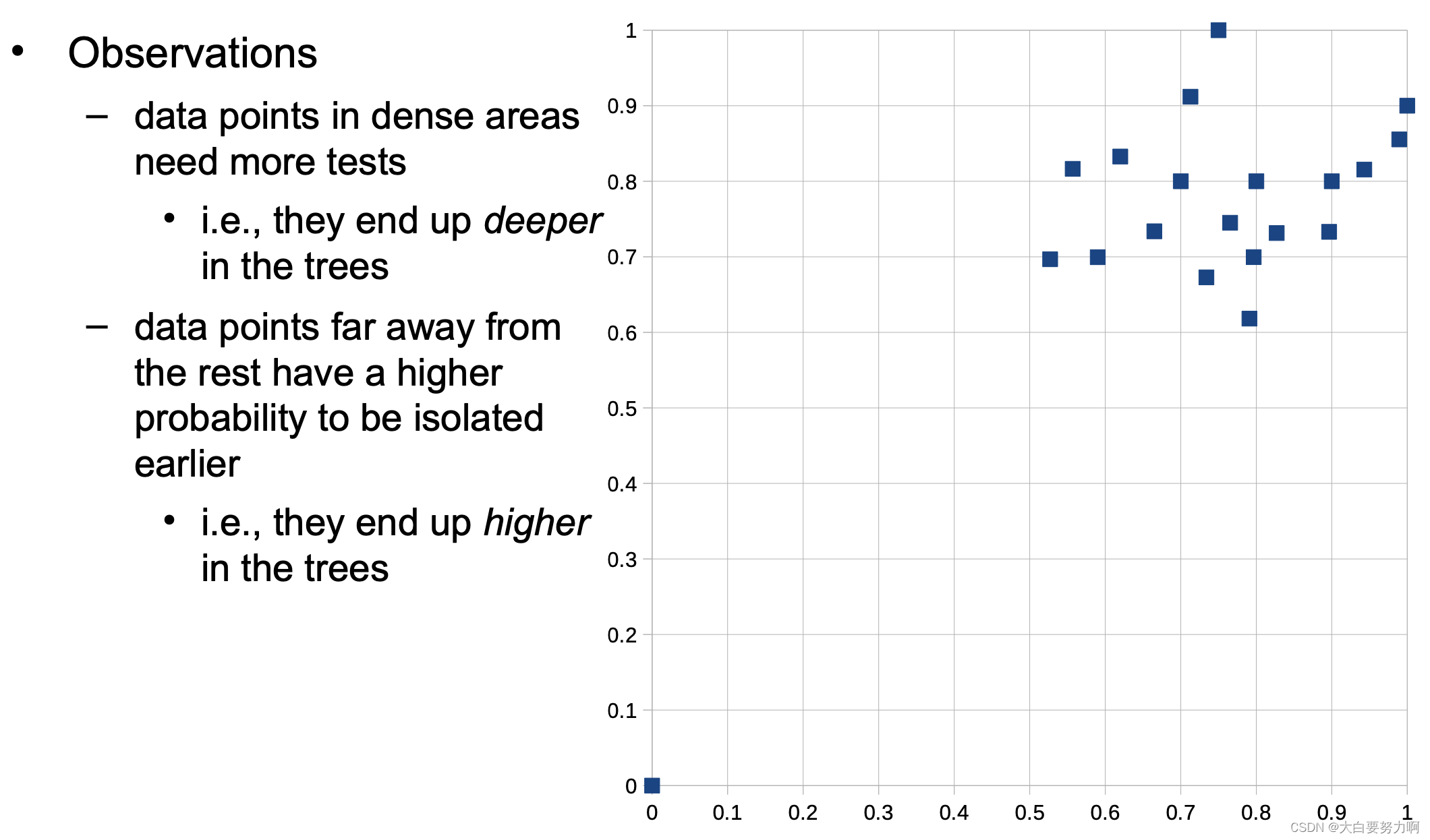
High-Dimensional Spaces
A large number of attributes may cause problems: many anomaly detection approaches use distance measures. Those get problematic for very high-dimensional spaces. Meaningless attributes obscure the distances
Practical Hint:
perform dimensionality reduction first, i.e., feature subset selection, PCA
note: anomaly detection is unsupervised. Thus, supervised selection (like forward/backward selection) does not work
Attributes may have different scales. Hence, different attributes may have different contributions to outlier scores.
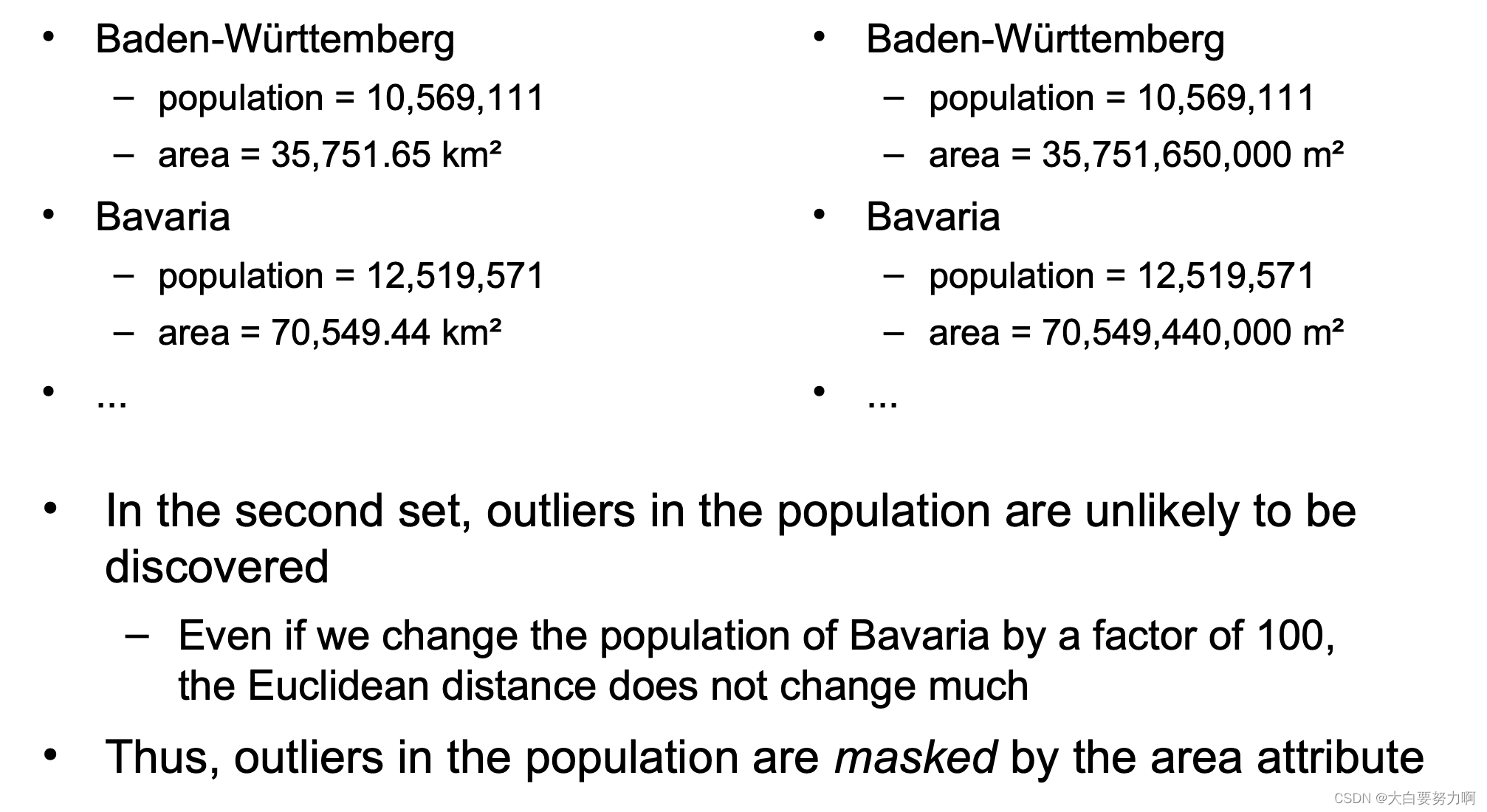
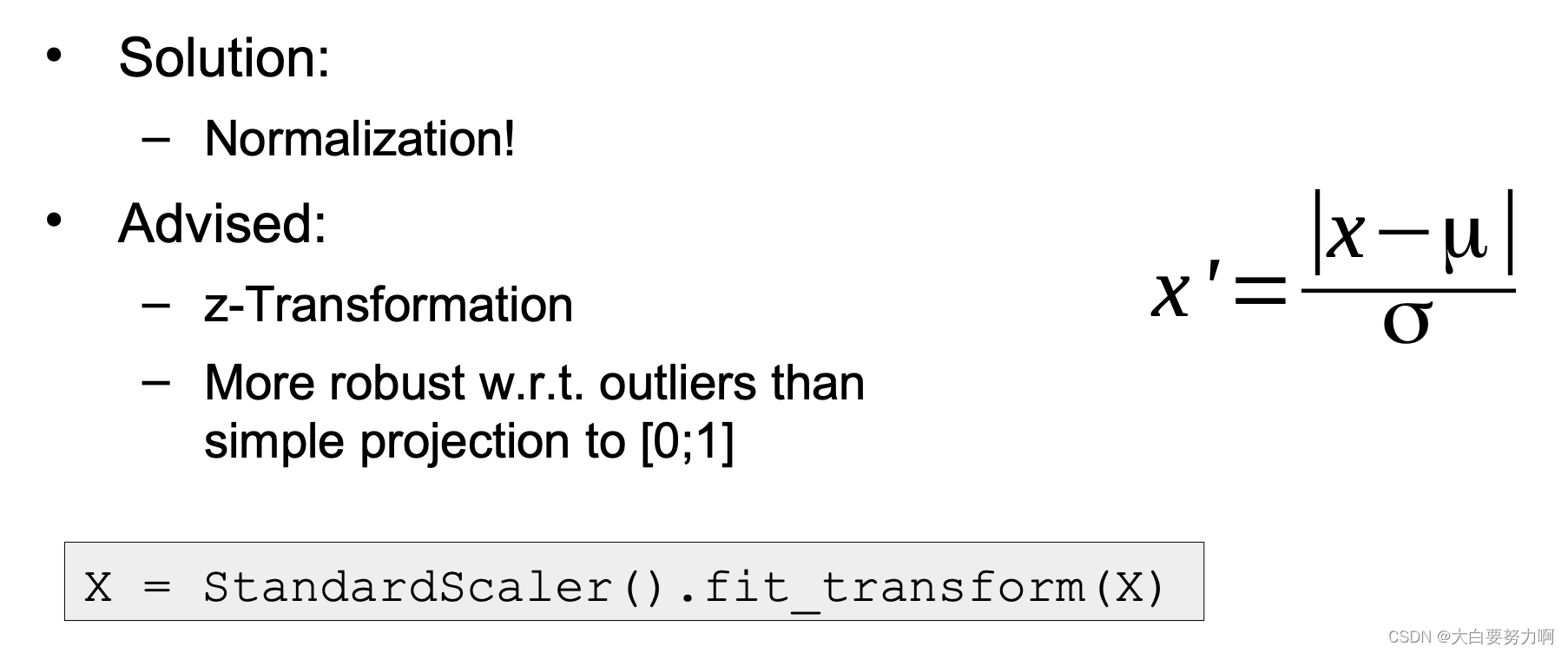
5.6 Evaluation Measures
Anomaly Detection is an unsupervised task
Evaluation: usually on a labeled subsample – Note: no splitting into training and test data!
Evaluation Measures
- F-measure on outliers
- Area under ROC curve
- Plots false positives against true positives
5.7 Semi-Supervised Anomaly Detection
All approaches discussed so far are unsupervised – they run fully automatic without human intelligence
Semi-Supervised Anomaly Detection
Experts manually label some data points as being outliers or not → anomaly detection becomes similar to a classification task
The class label being outlier/non-outlier
Challenges:
- Outliers are scarce → unbalanced dataset
- Outliers are not a class
Example: Outlier Detection in DBpedia
DBpedia is based on heuristic extraction
Several things can go wrong: wrong data in Wikipedia, unexpected number/date formats, errors in the extraction code, …
Challenge: Wikipedia is made for humans, not machines; Input format in Wikipedia is not constrained
Preprocessing: split data for different types
height is used for persons or buildings
population is used for villages, cities, countries, and continents
…
Separate into single distributions – makes anomaly detection better
Result
errors are identified at ~90% precision
systematic errors in the extraction code can be found
Typical error sources
unit conversions gone wrong (e.g., imperial/metric)
misinterpretation of numbers
Example: population: 28,322,006
e.g., village Semaphore in Australia (all of Australia: 23,379,555!)
a clear outlier among villages
Errors vs. Natural Outliers
Hard task for a machine
e.g., a 7.4m high vehicle
e.g., an adult person 58cm high
5.8 Summary
























 1415
1415











 被折叠的 条评论
为什么被折叠?
被折叠的 条评论
为什么被折叠?








